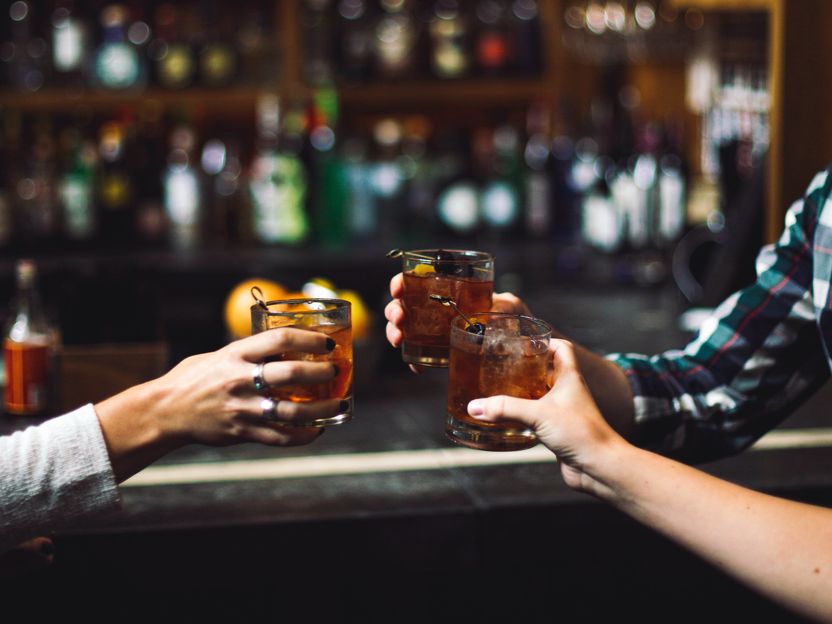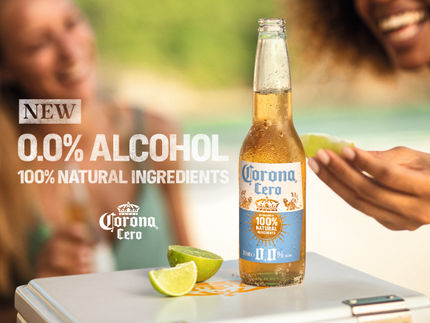Alcohol Alternatives Aren’t Just For Dry January
Advertisement
This Dry January, consumers now have a multitude of beverages to choose from when they’re not indulging in alcohol. Mintel research shows consumers are increasingly reevaluating their relationship with alcohol and replacing those drinks with new beverages. Options include non-alcoholic craft beer, mocktails, cannabis tonics, and even premium sparkling water. This nascent AA (alcohol alternative) category is one of the most exciting areas of innovation in the beverage industry and represents growth opportunities as more consumers experiment with the sober curious lifestyle.

Drew Beamer / Unsplash
Cheers to your health
The AA’s category’s spectacular rise has corresponded with the sober curious movement’s expansion, creating a snowball effect among consumers looking to reduce their alcohol consumption. New AAs make sober curiosity a more reachable goal, while an increase in the number of sober curious consumers further incentivizes innovation and product development.
In fact, nearly four in ten US consumers report closely or occasionally following the sober curious lifestyle, with adherence concentrated among young, urban, high-income consumers. These consumers are willing to pay a premium for unique, innovative beverages that allow them to achieve their personal health and wellness goals.
This desire for health and wellness anchors the sober curious movement; 71% of sober curious consumers worry about the long-term health effects of alcohol consumption compared to 57% of total consumers. Similarly, 39% of consumers follow or would try following the sober curious lifestyle for physical health reasons, and 29% for mental health reasons.
Health may draw consumers into the sober curious movement but experiences and a sense of community retains engagement. Nearly a third of consumers follow/would follow a sober curious lifestyle to try a new experience, and 12% in order to join a community of other sober curious practitioners. This community aspect of sober curiosity is apparent in the rise of sober bars, in-person events, and numerous online communities in which consumers in recovery, teetotalers, and the sober curious, connect and support each other.
AA beverages pass the vibe check
Consumers often reach for familiar everyday beverages such as soda or water as an alcoholic beverage alternative, yet sober curious consumers want more. Unique flavor profiles enhance the AA beverage experience beyond what’s typically available at the average grocery store. Bitter, spicy, and herbal flavors are more popular among sober curious consumers and may be perceived as fitting for special occasions, as these options mimic the taste experience of familiar alcoholic drinks and cocktails. Better-for-you claims are also vital within the AA category; A third of consumers cite “low calorie” and “low sugar” as important when choosing an AA.
The secret for a truly successful AA brand isn’t necessarily health claims or even flavor innovation but vibes, that je ne sais quoi that differentiates a brand from its competitors. Consumers want a drink that looks and feels special when substituting alcohol, making packaging design and strong branding critical within the AA category. Memorable design resonates with young high-income consumers, the group of consumers most interested in AA products. Mintel research shows that this group of consumers likes to purchase food/drinks that feature trendy packaging designs more than others.
Liquid Death – The “tallboy” can give Liquid Death a similar appearance to beer, making the brand a popular choice for consumers while at parties/events
Kin Euphorics – The glass bottle makes the product look similar to traditional spirits and would blend in on any bar cart
Curious Elixirs – The dark glass bottle, paper seal over the cap, and design typography position the drink as a cocktail alternative
Barbet – Barbet’s design evokes a sense of luxury. While it may not look like an alcoholic drink, it also doesn’t look like a kids’ drink
What Mintel thinks: Mitigation not elimination
The AA category’s rise does not necessarily represent a major competitive threat to alcoholic beverage brands as consumers are primarily interested in making alcohol an occasional indulgence rather than going completely dry.
Consumers don’t want to abandon alcohol, they want to drink less and drink better – whether that be better quality or better for you. Indeed, sales of value-tier alcoholic beverages have declined for years whereas high-end/super-premium brands have enjoyed consistent YOY growth. Alcoholic beverage companies must therefore prioritize the development of high-quality, healthier alcoholic drinks in response to consumers’ evolving preferences.
If you are a Mintel client, please contact your Account Manager to download the full Alcohol Alternatives Report, otherwise click here to see how our market research in this industry can help your brand strategize future initiatives.


























































